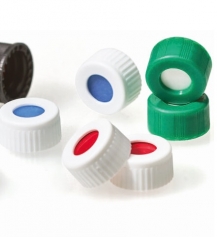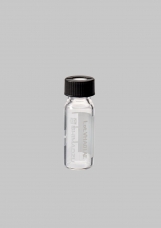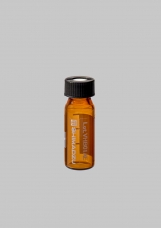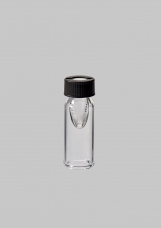Vials and accessories
Product Listing
-
Description:
Magnetic Universal Screw Seals ND18, Silicone white/PTFE blue
OUT OF STOCKMagnetic Universal Screw Seals ND18, Silicone white/PTFE blue
-
Description:
For high-sensitivity analysis ppt order high-sensitivity analysis (LC–MS) Analysis of compounds prone to adsorption (LC–MS and LC) Analysis with a focus on repeatability (QA/QC) Analysis requiring a low background
OUT OF STOCKFor high-sensitivity analysis ppt order high-sensitivity analysis (LC–MS) Analysis of compounds prone to adsorption (LC–MS and LC) Analysis with a focus on repeatability (QA/QC) Analysis requiring a low background
-
Description:
For high-sensitivity analysis ppt order high-sensitivity analysis (LC–MS) Analysis of compounds prone to adsorption (LC–MS and LC) Analysis with a focus on repeatability (QA/QC) Analysis requiring a low background
OUT OF STOCKFor high-sensitivity analysis ppt order high-sensitivity analysis (LC–MS) Analysis of compounds prone to adsorption (LC–MS and LC) Analysis with a focus on repeatability (QA/QC) Analysis requiring a low background
-
Description:
For high-sensitivity analysis ppt order high-sensitivity analysis (LC–MS) Analysis of compounds prone to adsorption (LC–MS and LC) Analysis with a focus on repeatability (QA/QC) Analysis requiring a low background
OUT OF STOCKFor high-sensitivity analysis ppt order high-sensitivity analysis (LC–MS) Analysis of compounds prone to adsorption (LC–MS and LC) Analysis with a focus on repeatability (QA/QC) Analysis requiring a low background
-
Description:
For high-sensitivity analysis ppt order high-sensitivity analysis (LC–MS) Analysis of compounds prone to adsorption (LC–MS and LC) Analysis with a focus on repeatability (QA/QC) Analysis requiring a low background
OUT OF STOCKFor high-sensitivity analysis ppt order high-sensitivity analysis (LC–MS) Analysis of compounds prone to adsorption (LC–MS and LC) Analysis with a focus on repeatability (QA/QC) Analysis requiring a low background
-
Description:
Our small-volume vials with their unique shape are made of the same materials and receive the same cleaning treatment as the 1.5 mL vials. They suppress adsorption more than other small-volume inserts by limiting the contact surface between the sample and the container. In addition, the bottom surface of the vial is hollowed out in order to increase thermal conductivity. Residual volume: Approx. 10 μL When using it, adjust the needle stroke parameter to be 15 mm higher than for the 1.5 mL vials. For example; Shimadzu SIL-40 series: 32 mm or less
OUT OF STOCKOur small-volume vials with their unique shape are made of the same materials and receive the same cleaning treatment as the 1.5 mL vials. They suppress adsorption more than other small-volume inserts by limiting the contact surface between the sample and the container. In addition, the bottom surface of the vial is hollowed out in order to increase thermal conductivity. Residual volume: Approx. 10 μL When using it, adjust the needle stroke parameter to be 15 mm higher than for the 1.5 mL vials. For example; Shimadzu SIL-40 series: 32 mm or less
-
Description:
Our small-volume vials with their unique shape are made of the same materials and receive the same cleaning treatment as the 1.5 mL vials. They suppress adsorption more than other small-volume inserts by limiting the contact surface between the sample and the container. In addition, the bottom surface of the vial is hollowed out in order to increase thermal conductivity. Residual volume: Approx. 10 μL When using it, adjust the needle stroke parameter to be 15 mm higher than for the 1.5 mL vials. For example; Shimadzu SIL-40 series: 32 mm or less
OUT OF STOCKOur small-volume vials with their unique shape are made of the same materials and receive the same cleaning treatment as the 1.5 mL vials. They suppress adsorption more than other small-volume inserts by limiting the contact surface between the sample and the container. In addition, the bottom surface of the vial is hollowed out in order to increase thermal conductivity. Residual volume: Approx. 10 μL When using it, adjust the needle stroke parameter to be 15 mm higher than for the 1.5 mL vials. For example; Shimadzu SIL-40 series: 32 mm or less
-
Description:
Our small-volume vials with their unique shape are made of the same materials and receive the same cleaning treatment as the 1.5 mL vials. They suppress adsorption more than other small-volume inserts by limiting the contact surface between the sample and the container. In addition, the bottom surface of the vial is hollowed out in order to increase thermal conductivity. Residual volume: Approx. 10 μL When using it, adjust the needle stroke parameter to be 15 mm higher than for the 1.5 mL vials. For example; Shimadzu SIL-40 series: 32 mm or less
OUT OF STOCKOur small-volume vials with their unique shape are made of the same materials and receive the same cleaning treatment as the 1.5 mL vials. They suppress adsorption more than other small-volume inserts by limiting the contact surface between the sample and the container. In addition, the bottom surface of the vial is hollowed out in order to increase thermal conductivity. Residual volume: Approx. 10 μL When using it, adjust the needle stroke parameter to be 15 mm higher than for the 1.5 mL vials. For example; Shimadzu SIL-40 series: 32 mm or less
-
Description:
Our small-volume vials with their unique shape are made of the same materials and receive the same cleaning treatment as the 1.5 mL vials. They suppress adsorption more than other small-volume inserts by limiting the contact surface between the sample and the container. In addition, the bottom surface of the vial is hollowed out in order to increase thermal conductivity. Residual volume: Approx. 10 μL When using it, adjust the needle stroke parameter to be 15 mm higher than for the 1.5 mL vials. For example; Shimadzu SIL-40 series: 32 mm or less
OUT OF STOCKOur small-volume vials with their unique shape are made of the same materials and receive the same cleaning treatment as the 1.5 mL vials. They suppress adsorption more than other small-volume inserts by limiting the contact surface between the sample and the container. In addition, the bottom surface of the vial is hollowed out in order to increase thermal conductivity. Residual volume: Approx. 10 μL When using it, adjust the needle stroke parameter to be 15 mm higher than for the 1.5 mL vials. For example; Shimadzu SIL-40 series: 32 mm or less





















